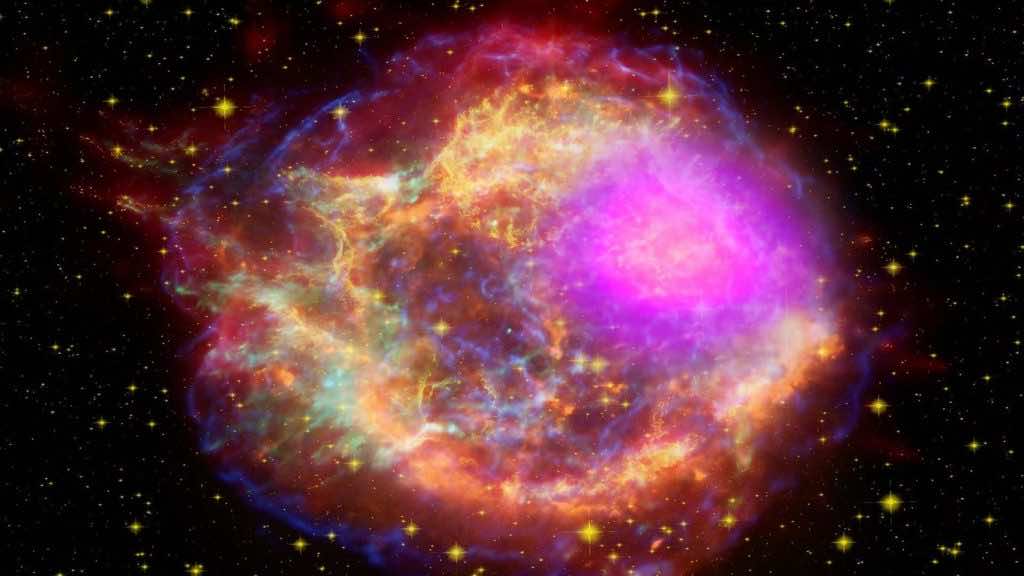A rare star that repeatedly explodes is also found to be emitting energetic light.
Analysis of an eruption from the binary system RS Ophiuchi has shown that the shock wave expanding out into space functions as a particle accelerator that generates gamma radiation.
“The observation that the theoretical limit for particle acceleration can actually be reached in genuine cosmic shock waves has enormous implications for astrophysics,” explained astrophysicist Ruslan Konno of the German Electron Synchrotron (DESY) in Germany and the HESS Collaboration.
“It suggests that the acceleration process could be just as efficient in their much more extreme relatives, supernovae.”
The binary star’s name is RS Ophiuchi and it is located 4,566 light-years away. It belongs to the recurrent nova category of stars.
The binary system consists of a white dwarf in close orbit with a red giant. As the two whirl around each other, material, mostly hydrogen, is siphoned off the red giant by the smaller, denser white dwarf.
This hydrogen accumulates on the white dwarf’s surface, where it heats up. Periodically, the mass becomes so great that the pressure and temperature at the bottom of the layer stimulate a thermonuclear explosion which is a nova.
“The stars forming the system are at approximately the same distance from each other as Earth and the Sun,” said astrophysicist Alison Mitchell of Friedrich-Alexander University Erlangen-Nürnberg in Germany and principal investigator of the HESS Nova program.
“When the nova exploded in August 2021, the HESS telescopes allowed us to observe a galactic explosion in very-high-energy gamma rays for the first time.”
The HESS array consists of five telescopes in Namibia, and was recently upgraded with a new, highly sensitive camera; the array detects Cherenkov radiation when a high-energy gamma-ray strikes Earth’s atmosphere and produces a shower of supercharged particles.
RS Ophiuchi’s rays were determined to be more than 100 gigaelectronvolts or 100 billion electronvolts.
Scientists believe that the shockwave from the white dwarf’s nova slams into the red giant’s wind, accelerating protons to very high energies, which can collide with each other to produce gamma-ray photons.
“This is the first time we have ever been able to carry out observations like this, and it will allow us to gain even more accurate future insights into how cosmic explosions work,” says theoretical astrophysicist Dmitry Khangulyan of Rikkyo University in Tokyo, Japan.
“We may, for example, discover that novae contribute to the ever-present sea of cosmic rays and therefore have a considerable effect on the dynamics of their immediate surroundings.”
The research has been published in Science.

